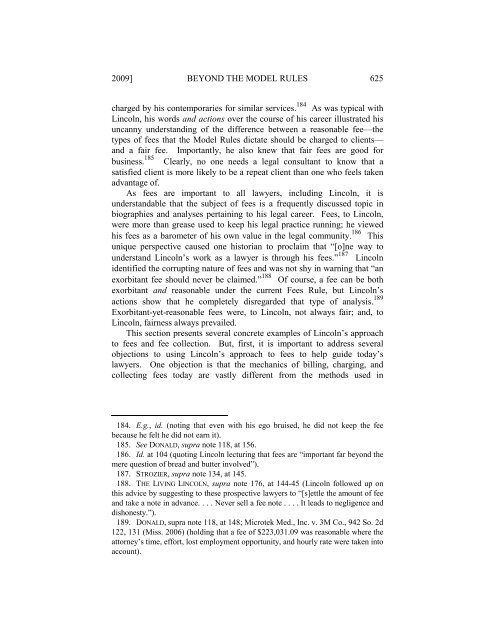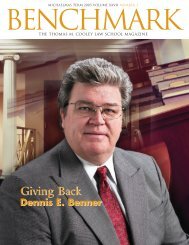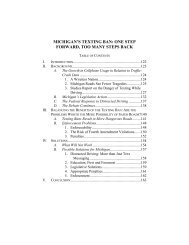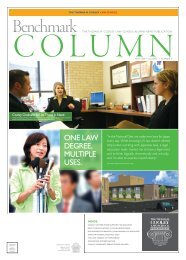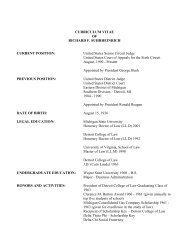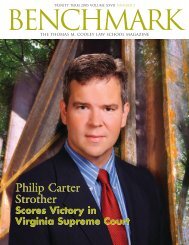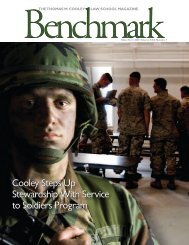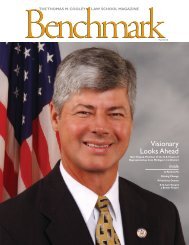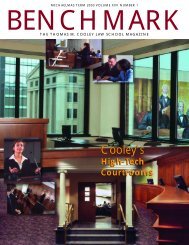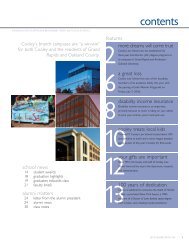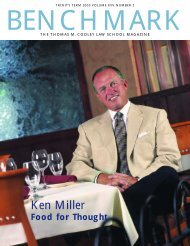Beyond The Model Rules - Thomas M. Cooley Law School
Beyond The Model Rules - Thomas M. Cooley Law School
Beyond The Model Rules - Thomas M. Cooley Law School
You also want an ePaper? Increase the reach of your titles
YUMPU automatically turns print PDFs into web optimized ePapers that Google loves.
2009] BEYOND THE MODEL RULES 625charged by his contemporaries for similar services. 184 As was typical withLincoln, his words and actions over the course of his career illustrated hisuncanny understanding of the difference between a reasonable fee—thetypes of fees that the <strong>Model</strong> <strong>Rules</strong> dictate should be charged to clients—and a fair fee. Importantly, he also knew that fair fees are good forbusiness. 185 Clearly, no one needs a legal consultant to know that asatisfied client is more likely to be a repeat client than one who feels takenadvantage of.As fees are important to all lawyers, including Lincoln, it isunderstandable that the subject of fees is a frequently discussed topic inbiographies and analyses pertaining to his legal career. Fees, to Lincoln,were more than grease used to keep his legal practice running; he viewedhis fees as a barometer of his own value in the legal community. 186 Thisunique perspective caused one historian to proclaim that “[o]ne way tounderstand Lincoln’s work as a lawyer is through his fees.” 187 Lincolnidentified the corrupting nature of fees and was not shy in warning that “anexorbitant fee should never be claimed.” 188 Of course, a fee can be bothexorbitant and reasonable under the current Fees Rule, but Lincoln’sactions show that he completely disregarded that type of analysis. 189Exorbitant-yet-reasonable fees were, to Lincoln, not always fair; and, toLincoln, fairness always prevailed.This section presents several concrete examples of Lincoln’s approachto fees and fee collection. But, first, it is important to address severalobjections to using Lincoln’s approach to fees to help guide today’slawyers. One objection is that the mechanics of billing, charging, andcollecting fees today are vastly different from the methods used in184. E.g., id. (noting that even with his ego bruised, he did not keep the feebecause he felt he did not earn it).185. See DONALD, supra note 118, at 156.186. Id. at 104 (quoting Lincoln lecturing that fees are “important far beyond themere question of bread and butter involved”).187. STROZIER, supra note 134, at 145.188. THE LIVING LINCOLN, supra note 176, at 144-45 (Lincoln followed up onthis advice by suggesting to these prospective lawyers to “[s]ettle the amount of feeand take a note in advance. . . . Never sell a fee note . . . . It leads to negligence anddishonesty.”).189. DONALD, supra note 118, at 148; Microtek Med., Inc. v. 3M Co., 942 So. 2d122, 131 (Miss. 2006) (holding that a fee of $223,031.09 was reasonable where theattorney’s time, effort, lost employment opportunity, and hourly rate were taken intoaccount).


